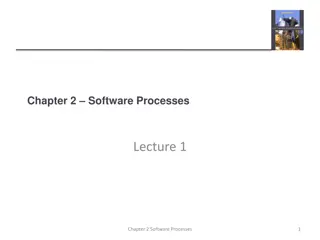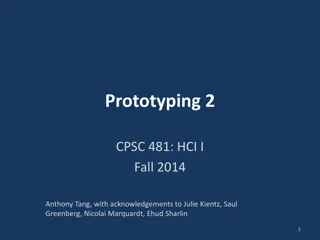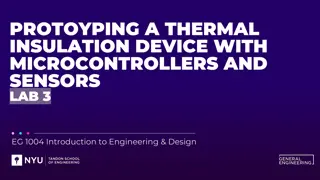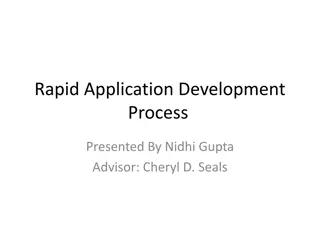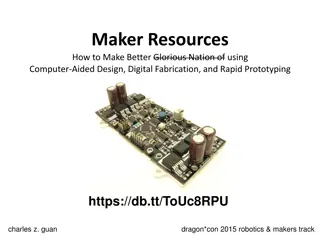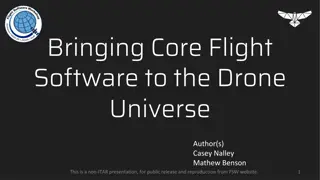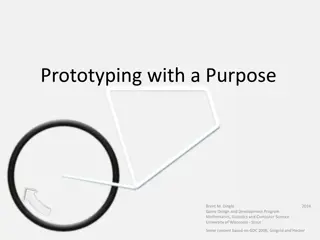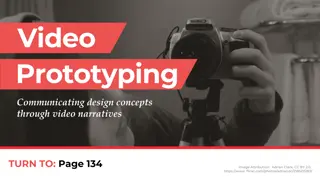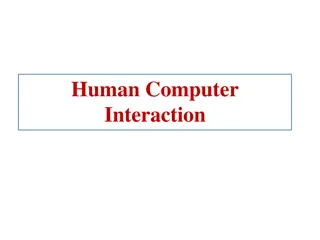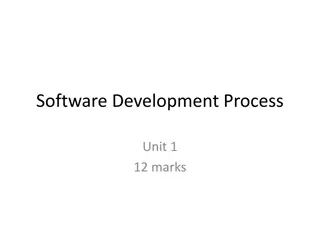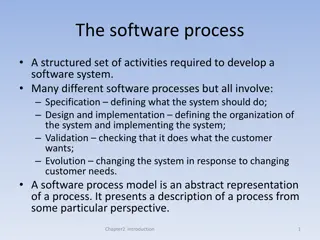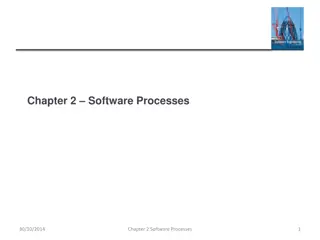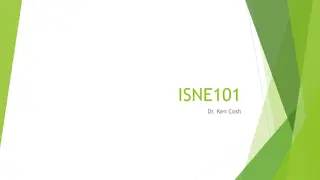Overview of Software Process Models and Prototyping Paradigm
This document discusses different models of software processes, including Waterfall, Prototyping, and Agile paradigms. It covers key concepts, levels of abstraction, 12 activities in every software project, and the phases of the Waterfall model. Additionally, it explores the Prototyping Paradigm and its advantages in obtaining early user feedback.
Download Presentation

Please find below an Image/Link to download the presentation.
The content on the website is provided AS IS for your information and personal use only. It may not be sold, licensed, or shared on other websites without obtaining consent from the author.If you encounter any issues during the download, it is possible that the publisher has removed the file from their server.
You are allowed to download the files provided on this website for personal or commercial use, subject to the condition that they are used lawfully. All files are the property of their respective owners.
The content on the website is provided AS IS for your information and personal use only. It may not be sold, licensed, or shared on other websites without obtaining consent from the author.
E N D
Presentation Transcript
The University of Western Australia School of Computer Science and Software Engineering CITS5502 Software Processes Lecture 2 Revision of Models of a Software Process
Key concepts Types of Software Processes o Significant shifts in Software Development Use of Paradigms, Models, Methods/Methodologies Twelve activities in every software project Life Cycle Paradigm, Cascade, Waterfall or phased model o Phased approach with specific entry/exit criteria Prototyping Paradigm with advantages and problems o RAD and Stepwise Refinement models o Barry Boehm s Model for Prototype Development Object Oriented Approaches o Rational Unified Process (RUP) Development as a Maintenance Process Incremental methods Agile Paradigm and Manifesto Tom Gilb s Evolutionary Paradigm 2 UWA, School of CSSE
Levels of Abstraction (Provides framework of concepts) e.g., Life Cycle, Prototyping A & B, Evolutionary Paradigms (Theoretical) Models (Provides activities and decision points) e.g., Waterfall, Spiral, Increment (Practical) Methodologies (Provides organization specific details) e.g., in-house or purchased You can interpret ? ?as A derives B or B is derived from A . e.g., Models are derived from Paradigms. Plans requires Estimates (e.g., estimates on the budget). It is impossible to get Estimates unless you have Methodologies. Certain organizations have Estimates (Provides project specifics) Plans Controls 3 UWA, School of CSSE ethos & this would reflect in their Methodologies.
The 12 Activities in every software project F Feasibility and Initial Planning A E U Analysis of Requirements Education and Tool Assembly User Training I Integration of Modules and Implementation D C Design (Detailed) Code and Test Individual Modules S Support for Customer in Initial Use M T Manuals and First Prototype with Screen Mockups Testing to Appropriate Level R P T. Woodnings 1 October 1988 Review after short Period of Use Promotion of Product 4 UWA, School of CSSE
Waterfall or phased model Question: Can you think of any suitable entry and exit criteria for each phase of the waterfall model? 5 UWA, School of CSSE
Prototyping Paradigm A prototype typically simulates only a few aspects of, and may be completely different from, the final product In this paradigm, the emphasis is on creating prototypes to o get valuable feedback from the user earlier in the project o let the client compare if the software matches the specification UWA, School of CSSE 6
Spiral Model of the Software Process In the Spiral model, emphasis is on building prototypes and risk analysis. Checkpoints to decide go or not go UWA, School of CSSE 7
Rapid Application Development (RAD) model Use minimal planning in favour of rapid prototyping. 8 UWA, School of CSSE
Rational Unified Process (RUP) Model This is an iterative software development process framework created by Rational Software Corporation (part of IBM) in 2003. It is intended to help software teams to select elements of the process that are appropriate to their needs. RUP is based on a set of building blocks and content elements, describing what is to be produced, the skills required, and explanation about how specific development goals are to be achieved. 9 UWA, School of CSSE
Incremental Methods This is a software development method where the product is designed, implemented, and tested incrementally. There are some variants of incremental development, including: o The methods may involve a series of mini- waterfalls being performed. o The initial software concept, requirements analysis, and design of architecture and system core may be defined using the waterfall model, but the implementation and product delivery are done incrementally. 10 UWA, School of CSSE
The Agile Paradigm and Manifesto Individual and Interactions over Processes and Tools Working Product over Comprehensive Documentation Customer over Contract Negotiation Responding to change over Following a plan That is, while there is value in the items on the right, under the Agile paradigm, items on the left are valued more. UWA, School of CSSE 11
Some Agile Software Development Models Scrum Extreme programming (XP) Feature-driven development (FDD) Test-driven development (TDD) Kanban Adaptive software development (ASD) Lean software development Rapid application development (RAD) Exercises: Research for more detail on some of these models yourself. 12 UWA, School of CSSE
Gilbs Evolutionary Paradigm The 10 basic principles of the Evolutionary Project Management method are: o E1: Decompose by performance results and stakeholders o E2: Do high-risk steps early, learn how unknowns really perform; o E3: focus on improving your most valuable performance objectives first; o E4: Base your early evolution on existing frameworks and stakeholders; o E5: design to cost dynamically; 13 UWA, School of CSSE
Gilbs Evolutionary Paradigm The 10 basic principles of the Evolutionary Project Management method are: o E6: design to performances dynamically; o E7: invest in an open-ended architecture early on; o E8: Motivate your team by rewarding results; o E9: Prioritize changes by value, not place in queue; o E10: Learn fast, change fast, adapt to reality fast. 14 UWA, School of CSSE
Recommended Reading Royce: Chapter 5 Life-Cycle Phases Wysocki: Chapter 2 SDPM Roadmap Pressman: Sections on The Linear Sequential Model and The Prototype Modell Sommerville: Sections on Boehm s Spiral Model , Process Iteration Evolutionary paradigm: http://concepts.gilb.com/dl59 Agile software development: https://en.wikipedia.org/wiki/Agile_software_deve lopment UWA, School of CSSE 15
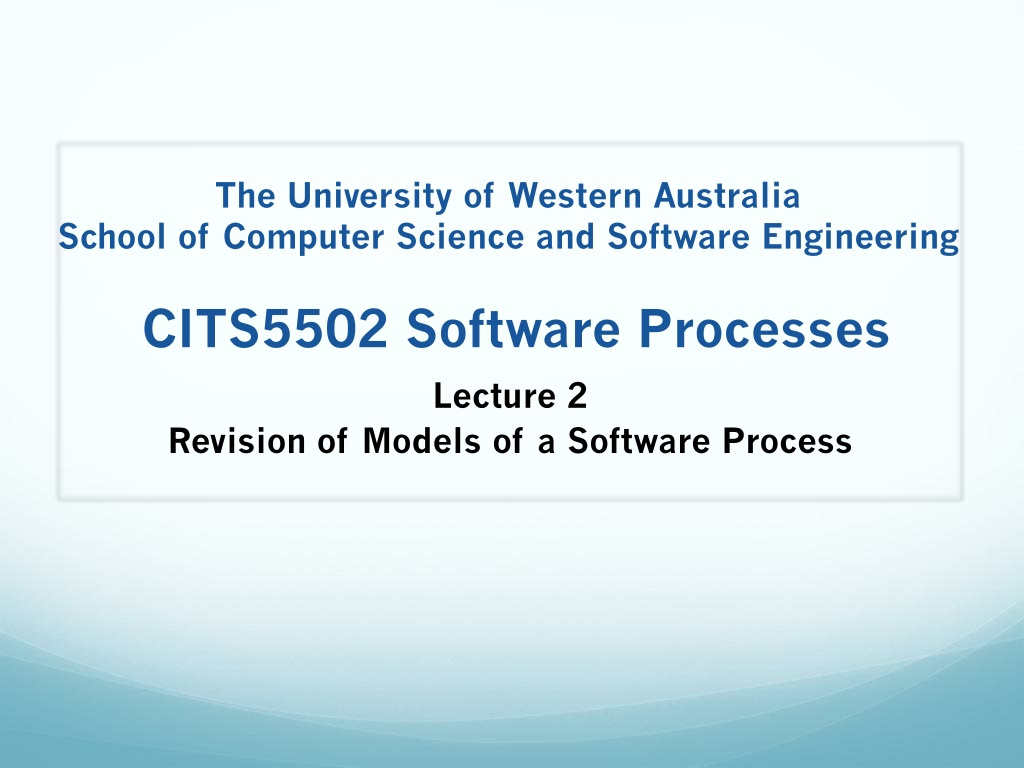

![[PDF⚡READ❤ONLINE] Black Hole Astrophysics: The Engine Paradigm (Springer Praxis](/thumb/21503/pdf-read-online-black-hole-astrophysics-the-engine-paradigm-springer-praxis.jpg)


